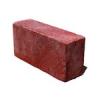I'm learning as I go, so I'll have to take your word for it.
The reason why the mesh does not exist at the centre is because that's where the black hole is.
In Quantum Graphity, the black hole is made up of a complete graph, like in the attached image. The complete graph + the exterior graph produces the spatial portion of gravitation.
My theory is that the edges are directed, oscillating between back and forward (very fast, at the Planck frequency right next to the event horizon), causing gravitational time dilation. Alternatively, one can consider the vertices to be the oscillators, forming gradients along the edges. Either way, this would be the temporal part of gravitation.
Both space and time are curved.
Right now my propagators move by picking an edge to follow in a pseudorandom fashion. This can't be the full story though, since the gradient of gravitational time dilation should affect propagators -- pseudorandom propagators don't respond to temporal gravitation, only respond to spatial gravitation. I'm working on it... I'm envisioning a scattering matrix that is n*n in size, where n is the number of edges for a particular vertex.
Does it make sense?









